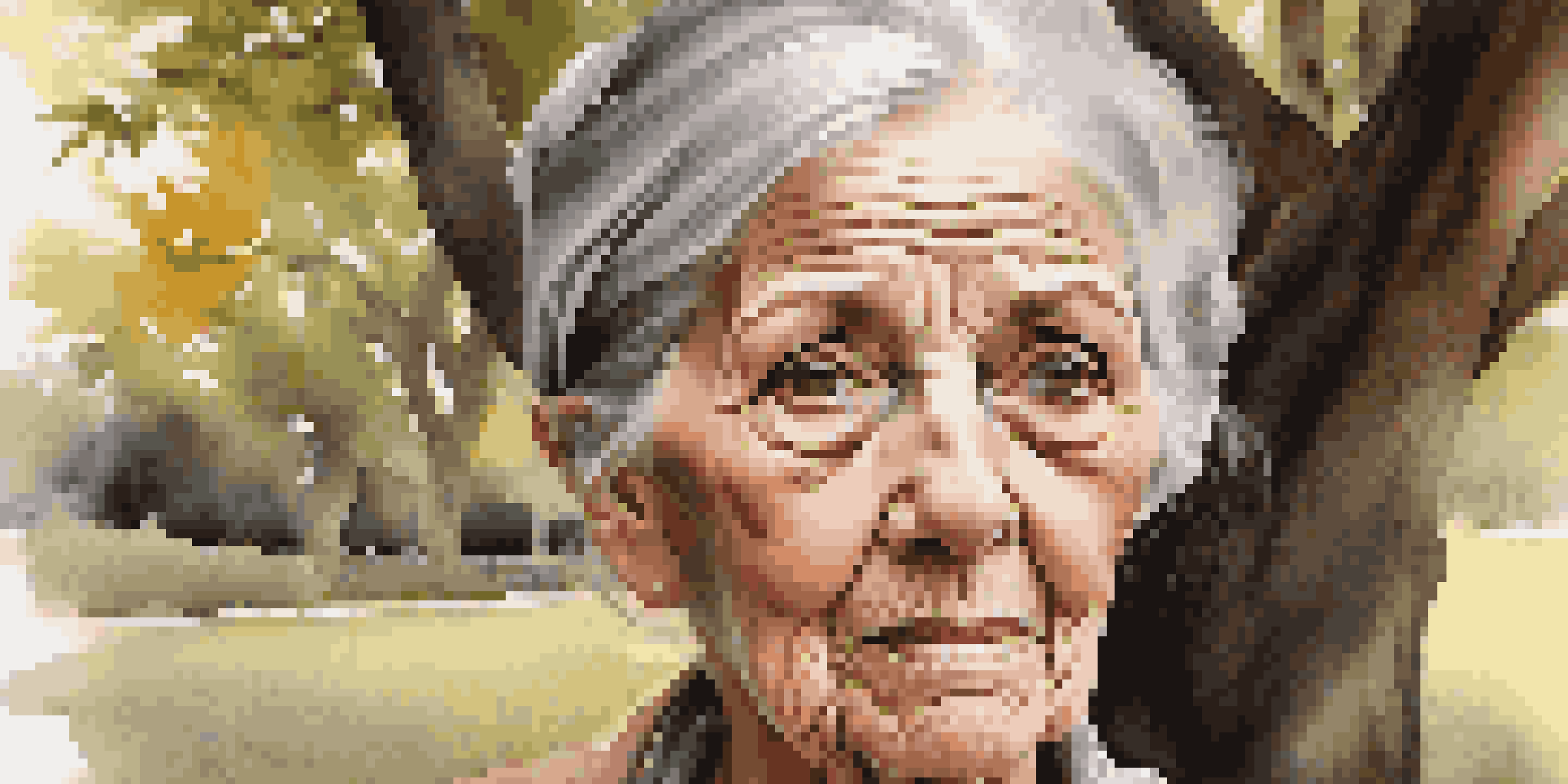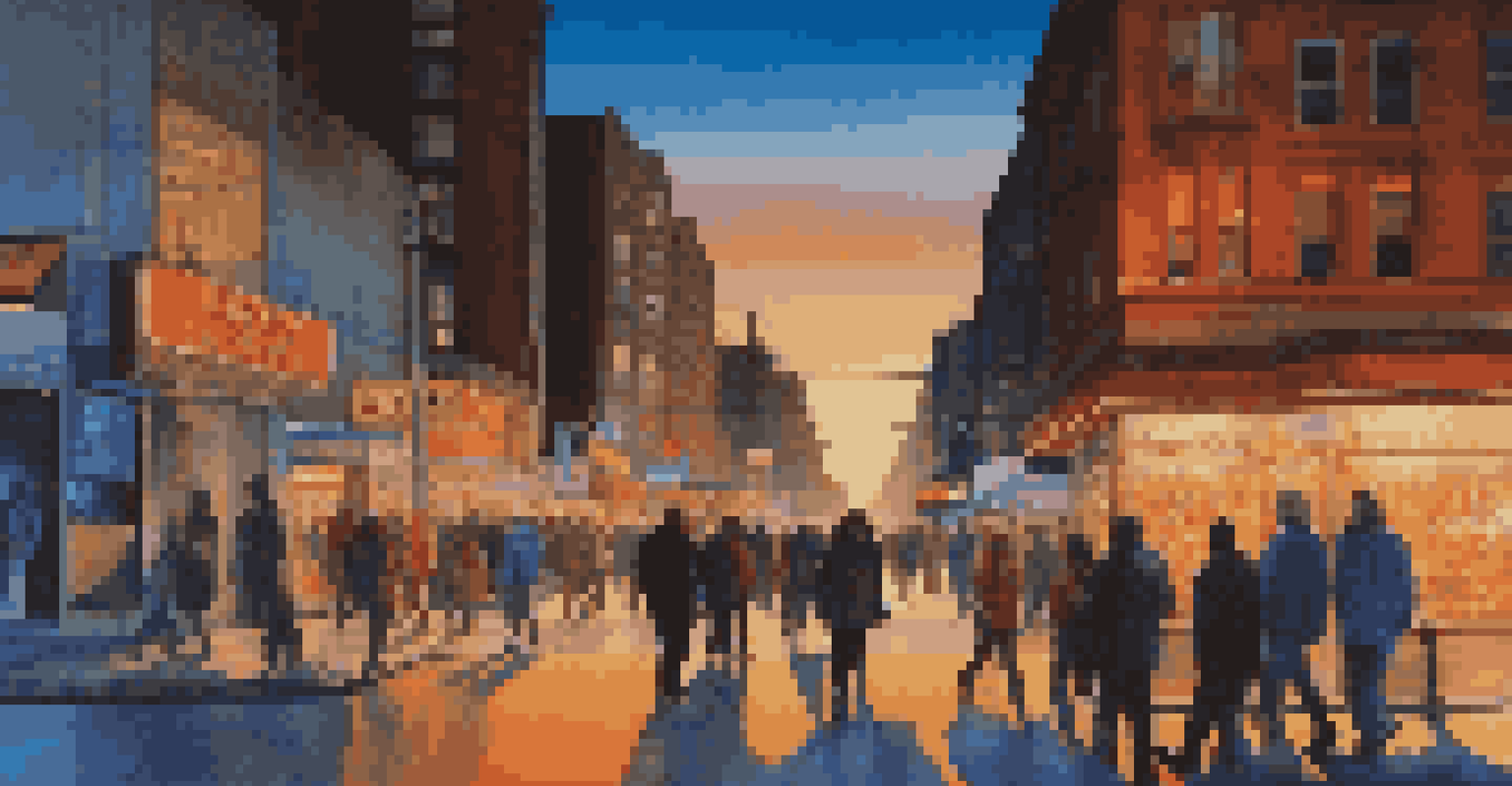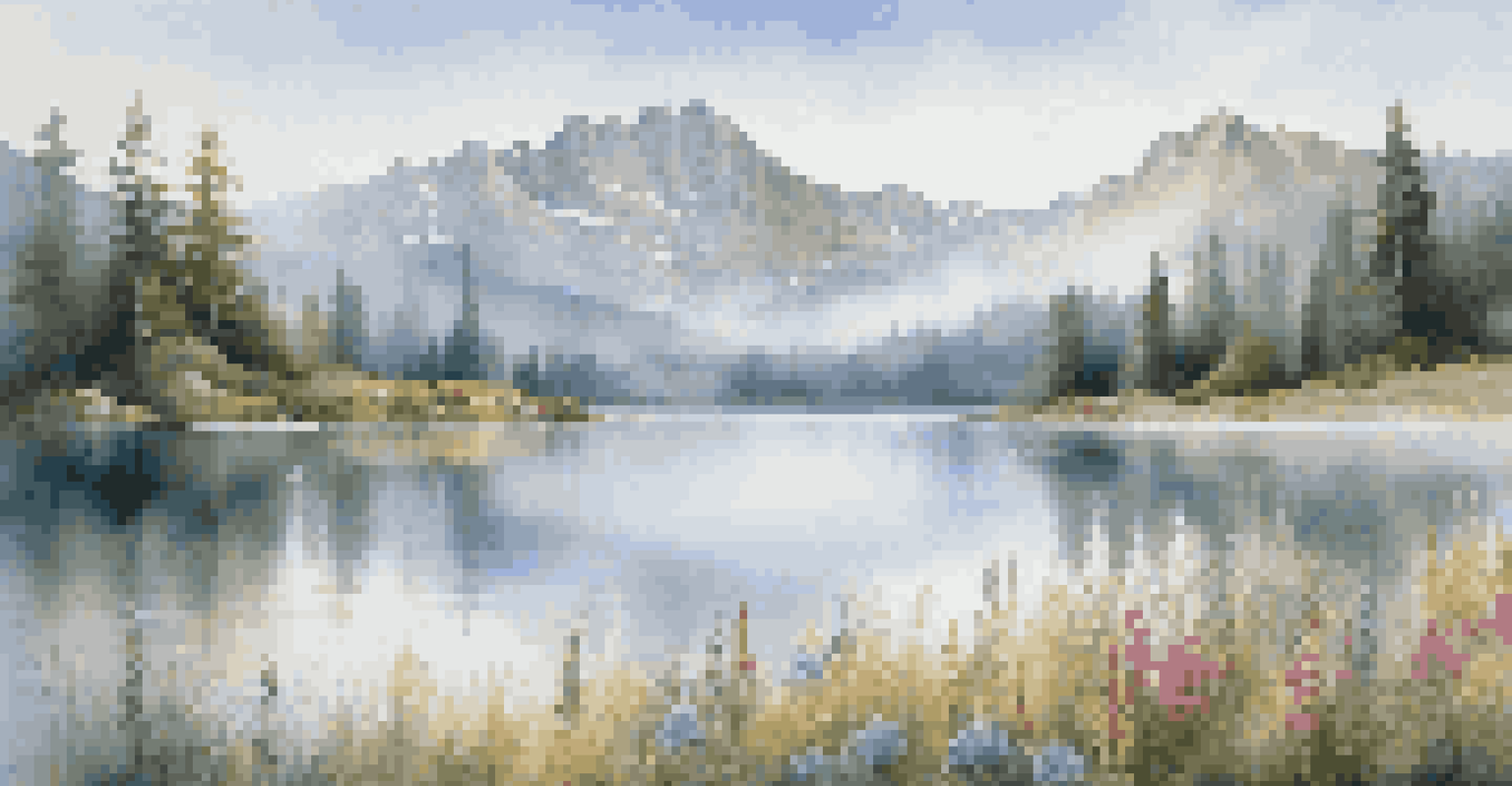Understanding Photorealism: The Art of Capturing Reality

What is Photorealism and Its Origins
Photorealism is an art movement that emerged in the late 1960s and early 1970s, aiming to create paintings that are almost indistinguishable from high-resolution photographs. Artists in this movement meticulously study their subjects to replicate every detail, color, and texture. This technique often involves using photographs as references, allowing artists to capture the essence of reality with stunning accuracy. Understanding its origins gives us insight into how this genre transformed perceptions of realism in art.
The closer you get to the truth, the more it becomes a question of perception.
The movement was partly a response to the abstract expressionism that dominated the art scene at the time. Artists wanted to move away from abstraction and embrace a more tangible representation of the world. Early pioneers like Chuck Close and Richard Estes played a crucial role in shaping photorealism, pushing the boundaries of what could be captured on canvas. Their dedication to precision and detail set the stage for future generations of artists.
As technology advanced, so did the techniques used in photorealism. With the introduction of high-quality cameras and digital editing tools, artists began experimenting with new methods of capturing reality. This evolution has made photorealism more accessible, allowing a broader range of artists to explore this captivating style.
The Techniques Behind Photorealistic Art
Creating photorealistic artwork requires a combination of keen observation and technical skill. Artists often begin by selecting a subject and then taking numerous reference photographs from various angles. This extensive photographic study helps them understand the nuances of light, shadow, and texture. By breaking down the subject into manageable parts, artists can recreate the scene layer by layer, much like a photographer capturing a moment in time.

One common technique used in photorealism is the grid method. This involves drawing a grid over the reference photo and a corresponding grid on the canvas. Artists then replicate the image square by square, ensuring that every detail is accurately translated. This meticulous process may take hours, days, or even months, depending on the complexity of the subject. The result is a painting that defies the viewer's expectations, often evoking a sense of wonder.
Photorealism's Origins and Techniques
Emerging in the late 1960s, photorealism focuses on creating art that closely resembles high-resolution photographs through meticulous observation and precise techniques.
Additionally, modern tools like airbrushes and digital software have expanded the artist's toolkit. These tools allow for smoother gradients and finer details, making it easier to replicate the subtleties of light and texture. Despite these advancements, the core of photorealism remains the artist's ability to see and interpret the world with precision.
The Role of Light and Shadow in Photorealism
Light and shadow are crucial elements in photorealism, as they create depth and dimension within a painting. Artists study how light interacts with their subject, observing where it falls and how it shapes the forms. This careful observation allows them to replicate the play of light in their artwork, making it feel three-dimensional. By mastering this aspect, artists can evoke emotions and create a sense of atmosphere in their pieces.
The camera is an instrument that teaches people how to see without a camera.
The use of contrast is also vital in photorealistic art. Strong contrasts between light and dark areas can enhance a painting's realism, drawing the viewer's eye to specific details. For instance, a shiny surface may reflect light in a way that highlights its texture, while shadows can create a sense of mystery. This balance of light and shadow not only adds depth but also tells a story within the artwork.
Moreover, artists often experiment with the effects of different lighting conditions, such as natural light versus artificial light. Each type of light can drastically alter the mood and perception of the subject. By capturing these variations, photorealists can showcase their mastery of the medium and invite viewers to appreciate the intricacies of light in everyday life.
Famous Photorealist Artists and Their Impact
Photorealism boasts a roster of influential artists who have left an indelible mark on the art world. Chuck Close is perhaps the most recognized name, known for his large-scale portraits that challenge the boundaries of perception. His unique approach, which often involved using a grid technique, allowed him to create mesmerizing images that invite viewers to explore both detail and abstraction. Close's work has inspired countless artists to pursue photorealism, proving that this style can convey deep emotional narratives.
Another significant figure is Richard Estes, often regarded as the father of photorealism. His urban scenes, filled with reflections and intricate details, capture the essence of city life. Estes' ability to portray the complexity of urban environments not only showcases his technical skill but also highlights the beauty found in everyday settings. His work has paved the way for a greater appreciation of the ordinary, elevating it to the extraordinary.
Impact of Light and Shadow
The interplay of light and shadow is essential in photorealistic art, as it adds depth and dimension, enhancing the realism and emotional impact of the artwork.
These artists, along with others like Audrey Flack and Ralph Goings, have not only advanced the techniques of photorealism but have also challenged societal perceptions of art. By embracing realism, they have opened doors for discussions about truth, representation, and the role of technology in the creative process. Their contributions continue to influence new generations of artists, ensuring that photorealism remains a vital and evolving genre.
The Emotional Power of Photorealistic Art
While photorealism is often celebrated for its technical precision, it also possesses a profound emotional depth. The ability to capture reality with such accuracy can evoke strong feelings in viewers, allowing them to connect with the artwork on a personal level. For instance, a lifelike portrait can reveal the essence of its subject, sparking reflections on identity, memory, and human experience. This emotional resonance is what sets photorealism apart from other art forms.
Moreover, photorealistic landscapes can transport viewers to serene or dramatic settings, eliciting feelings of nostalgia or awe. Artists often choose subjects that resonate with them personally, infusing their work with a sense of story and meaning. By sharing their perspective through such detailed representation, they invite viewers to experience the world through their eyes, fostering a deeper appreciation for the beauty around us.
This emotional power extends beyond traditional subjects, as contemporary artists explore themes such as technology, consumerism, and social issues. By marrying photorealism with these concepts, artists can challenge viewers to reconsider their surroundings and the implications of modern life. This blend of technique and emotion is what makes photorealism a compelling and relevant genre in today's art landscape.
The Future of Photorealism in Contemporary Art
As we move further into the 21st century, photorealism continues to evolve, reflecting changes in technology and society. Contemporary artists are experimenting with new mediums, such as digital painting and augmented reality, to push the boundaries of what photorealism can achieve. This fusion of traditional techniques with modern technology opens up exciting possibilities for representation and expression, allowing artists to create immersive experiences that engage viewers in unique ways.
Additionally, the rise of social media has transformed how artists share their work and connect with audiences. Platforms like Instagram enable photographers and painters to showcase their art to a global audience, fostering a community of enthusiasts and creators. This accessibility has sparked a renewed interest in photorealism, encouraging a diverse range of artists to explore the genre and contribute their voices to the conversation.
Future of Photorealism
Contemporary artists are evolving photorealism by blending traditional techniques with modern technology and addressing relevant social issues, ensuring its continued relevance in today's art world.
The future of photorealism also lies in its ability to address contemporary issues. Artists are increasingly using their skills to comment on topics such as climate change, urbanization, and cultural identity. By combining technical mastery with relevant themes, photorealism remains a powerful medium for artistic expression, ensuring its place in the ever-changing landscape of contemporary art.
How to Appreciate and Collect Photorealistic Art
Appreciating photorealistic art involves more than just marveling at the technical skill; it's about engaging with the narrative behind the work. When viewing a photorealistic piece, take time to observe the details and think about the story the artist is telling. Consider the choices they made in terms of composition, lighting, and subject matter. This deeper understanding can enhance your appreciation for the artist's vision and the emotions they aim to convey.
For those interested in collecting photorealistic art, it's essential to research and connect with artists whose work resonates with you. Attend gallery exhibitions, art fairs, and studio visits to discover new talent and explore different styles within the genre. Engaging with artists directly can also provide valuable insight into their creative process and intentions, enriching your experience as a collector.

Moreover, investing in photorealistic art can be a rewarding experience. As the genre continues to gain recognition, owning a piece can not only enhance your space but also serve as a conversation starter. Whether you are a seasoned collector or a newcomer, embracing photorealism can deepen your appreciation for art and its ability to reflect reality in extraordinary ways.